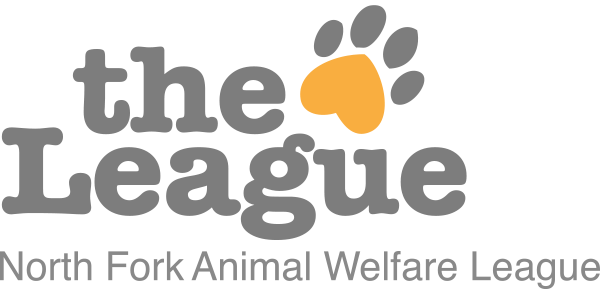Set Up Your Pup for Success: Simple Training Tips for Your Dog
Promote a safe environment and happy dog with these helpful tips!
The start of a new year always feels like a fresh beginning, doesn’t it? It’s the perfect time to embrace new habits, set goals, and create routines that make life better for you and those you love, including your furry family members!
If you’ve recently brought a dog into your home or are considering adoption, January couldn’t be more fitting to focus on helping your new best friend settle in. Why? Because it’s also Train Your Dog Month!
While dog training can sound intimidating, it doesn’t have to be! Let’s dive into some helpful, approachable tips to make this transition smooth for both you and your canine companion.
1. Crate Training: A Safe Space for Your Dog
One of the most valuable tools for new dog owners is crate training. When done correctly, a crate won’t be a cage—it would be a safe haven for your dog. It provides them with a space to relax, recharge, and feel secure, especially in a new home.
Why It’s Helpful:
● Promote Safety: A crate prevents your dog from getting into trouble when you can’t supervise them.
● Supports House Training: Dogs typically avoid soiling their sleeping space, which helps teach bladder control.
● Eases Anxiety: Crates give dogs a sense of comfort and security, especially during overwhelming situations like a busy household or fireworks.
How to Get Started:
● Choose a crate large enough for your dog to stand, turn around, and lie down comfortably.
● Make it cozy with a soft blanket and a favorite toy.
● Encourage your dog to explore it by leaving the door open and tossing in treats.
● Gradually increase the time they spend inside, always associating the crate with positive experiences.
Remember, never use a crate as punishment. It should always feel like a safe, happy space for your dog.
2. Use Positive Reinforcement for Training
Positive reinforcement is one of the most effective ways to train your dog. This method involves rewarding good behavior with treats, praise, or affection—encouraging your dog to repeat those behaviors.
How to Implement It:
● Be Immediate: Timing is everything. Reward your dog as soon as they perform the desired behavior, so they understand what earned the treat.
● Keep Treats Small: Use tiny, healthy treats to avoid overfeeding.
● Pair with Verbal Cues: For example, say “Good!” when your dog sits, so they associate the command with the action and the reward.
● Stay Consistent: Consistency helps your dog learn faster and feel confident about what’s expected of them.
Positive reinforcement strengthens your bond with your dog and makes training a fun, rewarding experience for both of you.
3. Establish a Routine
Dogs thrive on routine because predictability helps them feel secure and reduces anxiety, especially when they’re adjusting to a new home. A consistent schedule gives your dog a sense of stability and teaches them what to expect throughout the day.
● Start by feeding your dog at the same times daily to establish a regular mealtime schedule.
● Consistent potty breaks are equally important, as they not only support house training but also help prevent accidents.
● Regular walks and exercise sessions are vital for burning off energy, keeping your dog physically fit, and supporting their mental well-being.
● Don’t forget to include playtime as a key part of the routine. Activities like fetch, tug-of-war, or interactive toys provide fun and bonding opportunities while keeping your dog engaged.
Over time, your dog will learn to anticipate these daily activities, which makes life easier and more enjoyable for both of you. By creating a routine, you’re setting the foundation for a happy, well-adjusted pet.
4. Create a Safe Environment
Before bringing a dog into your home, it’s important to dog-proof your space to ensure their safety.
Tips for a Dog-Safe Home:
● Secure Hazardous Items: Keep cleaning supplies, medications, and foods toxic to dogs (like chocolate or grapes) out of reach.
● Check for Small Objects: Remove anything that could be a choking hazard, such as coins or small toys.
● Protect Cables and Wires: Tuck away electrical cords to prevent chewing accidents.
● Outdoor Safety: If you have a yard, ensure it’s fenced and free of potential escape routes.
Providing a safe environment helps your dog feel comfortable and minimizes the risk of accidents.
When Training Your Dog, Be Patient and Kind
Every dog is unique, and it’s normal for some to take longer to adjust to a new home or learn new habits. Patience is key. Celebrate small wins and remember that building trust and confidence takes time.
If you encounter challenges, don’t hesitate to seek guidance from a professional trainer or your local animal welfare organization. Remember, training isn’t just about teaching commands—it’s an opportunity to build a deeper connection with your dog. Playtime and training sessions help strengthen your bond and keep your dog mentally and physically stimulated.
At the North Fork Animal Welfare League (NFAWL), we’re here to support you every step of the way. Whether you’re considering adoption or need advice as a new pet parent, our team is ready to help. Let’s work together to make 2025 a year of joy, growth, and wagging tails.
Are you ready to bring a furry friend into your life? Visit NFAWL to learn more about adopting a pet and making a difference today.



